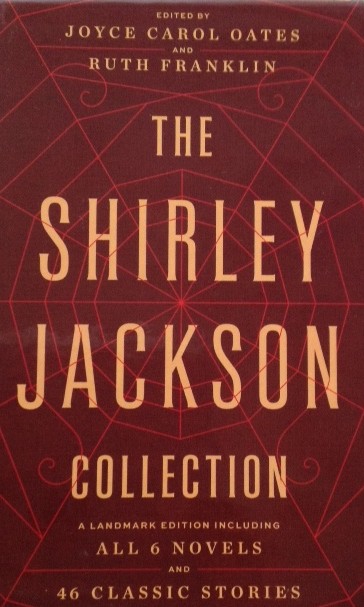Inspiring Older Readers
 posted on 02 Sep 2021
posted on 02 Sep 2021
Life Among the Savages by Shirley Jackson
Roughly at the same time that Shirley Jackson’s We Have Always Lived in the Castle was being reviewed for Letterpress, I was reading it for the first time. This was pure serendipity. I had previously read only one or two of her short stories but otherwise knew remarkably little about the woman who would write half-a-dozen novels and over two hundred stories (a good number appearing in The New Yorker magazine) and become revered as one of the twentieth century’s greatest contributors to literature in the American Gothic tradition.
I’ll be perfectly honest, however: I was a little underwhelmed by We Have Always Lived in the Castle, the novel many consider to be her greatest. I thought it superbly written, with some great and disturbing scenes which also seemed to reflect closely and unflinchingly observed truths – the ease with which local neighbours become a jeering mob and turn on the young women, for instance. But I also found it somewhat repetitive, the necessary psychological tension sometimes flagging.
What interested me more was finding out that in addition to her Gothic, not-quite-supernatural novels and stories Jackson also wrote two domestic memoirs: Life Among the Savages (1953) and Raising Demons (1957), about her family life in rural Vermont in a rambling and dilapidated rented house. I have just read the first of these and found it hugely enjoyable.
I approached Life Among the Savages expecting some kind of sinister reprise of her fiction, but this isn’t the case. Nor is it quite a scathing proto-feminist satire on the repressive 1950s life of US ‘housewives’, as some have claimed. But having said this, there is an element of truth in both perspectives: there is an undertone of slightly queasy, sinister panic in this account of the pressures (ineptly managed) of raising four children, with too little money, in a too-large house, with two distracted writer-parents making little more than one insecure living. Thankfully, what this memoir isn’t is a winsome, idealised self-congratulatory account of the charming life of a middle class family. At its best it is splendidly written, with just a dash of acerbic observation and sometimes bitter humour – enough to offer a slightly darker view of mid-century domestic life in the US.
Writing of these memoirs in The Guardian, Michelle Dean says that while they may originally have been packaged as light fare, with “all the markers of the sort of peacock-parenting that is now the scourge of your social media feeds” (which I don’t think is true, incidentally), these are “not cheerful books”: the “seeds of dread are everywhere”. Again, I think this judgement slightly exaggerates but there is a kernel of truth to it: the dread never reaches hand-wringing, hysterical proportions (unlike the novels) but it is there. And the fact that over the years readers have come to recognise the dread-versus-tales-of-comic-motherhood dichotomy that lies at the heart of these memoirs does further reinforce the view that these apparently light and effortlessly dashed off pieces are more sophisticated and perhaps more serious than they first appear.
As well as the undercurrent of darker humour there is also the occasional, unintentional jolt we experience when reading of a relatively close but very different era – smoking throughout pregnancy, for instance, a fairly casual usage of sleeping pills, a bedtime ritual (for the adults) that includes the gathering up of books and cigarettes and matches and tumblers of brandy and ashtrays. There is an undeniable, quintessential Fifties glamour to it.
If you like Shirley Jackson’s dark American Gothic fiction but like me were unaware of this other side to her writing, then be sure not to miss it. In their own very different way these memoirs are as important as her novels and short stories as well as being, paradoxically, amongst the reasons that she was for so many years dismissed as a lightweight middlebrow writer.
Looking back I think what I haven’t given an adequate impression of is Jackson’s impeccable comic timing and rhythm. These are indispensable attributes of genuinely comic writing and Jackson most certainly has them. To my mind these books put her up there alongside – perhaps even above – some of the great mid-century US humorists such as Thurber and Perelman.
Alun Severn
September 2021